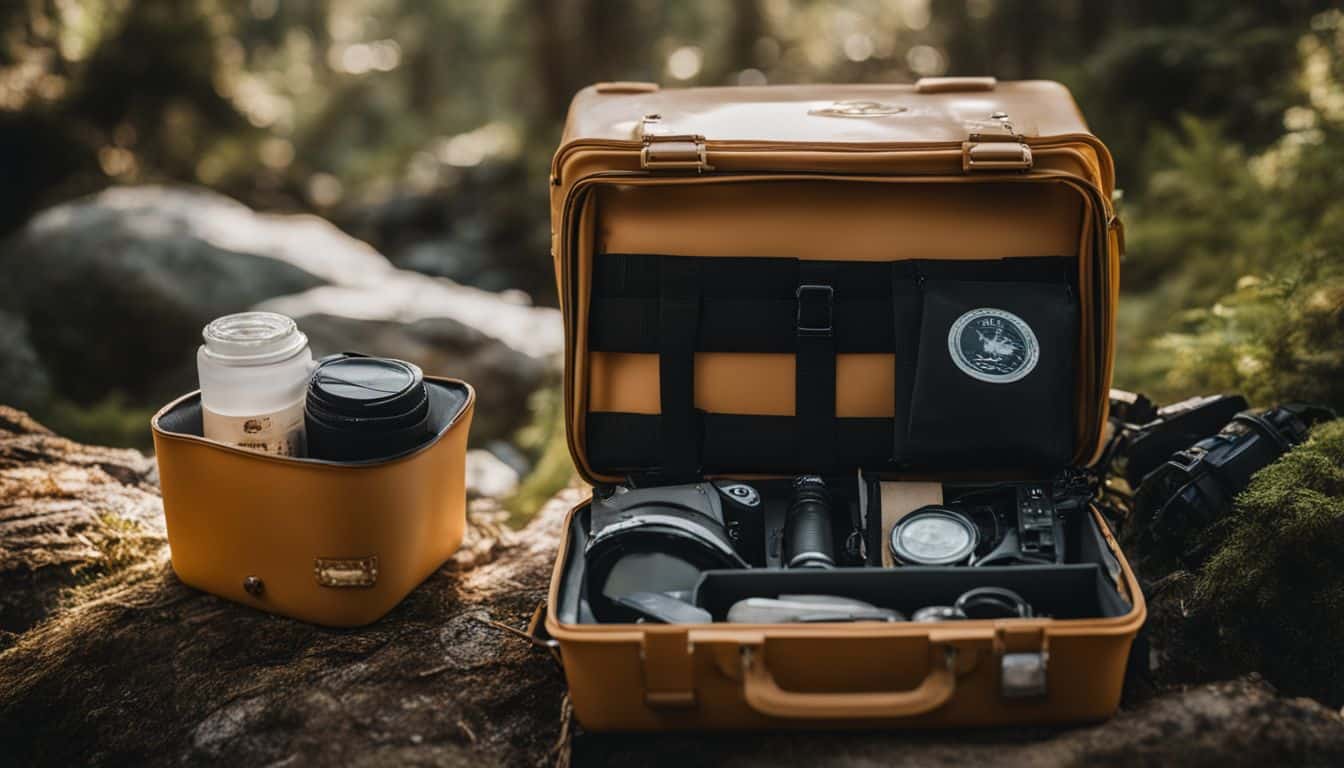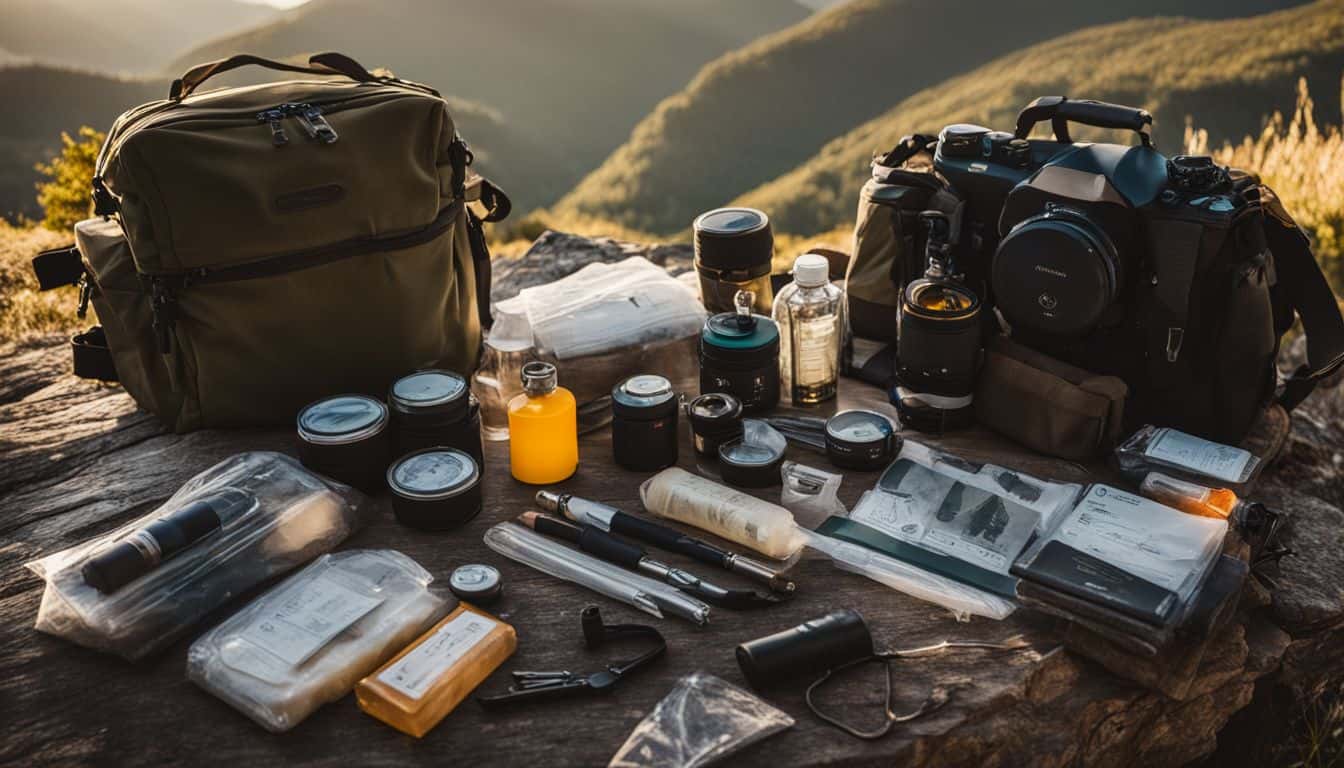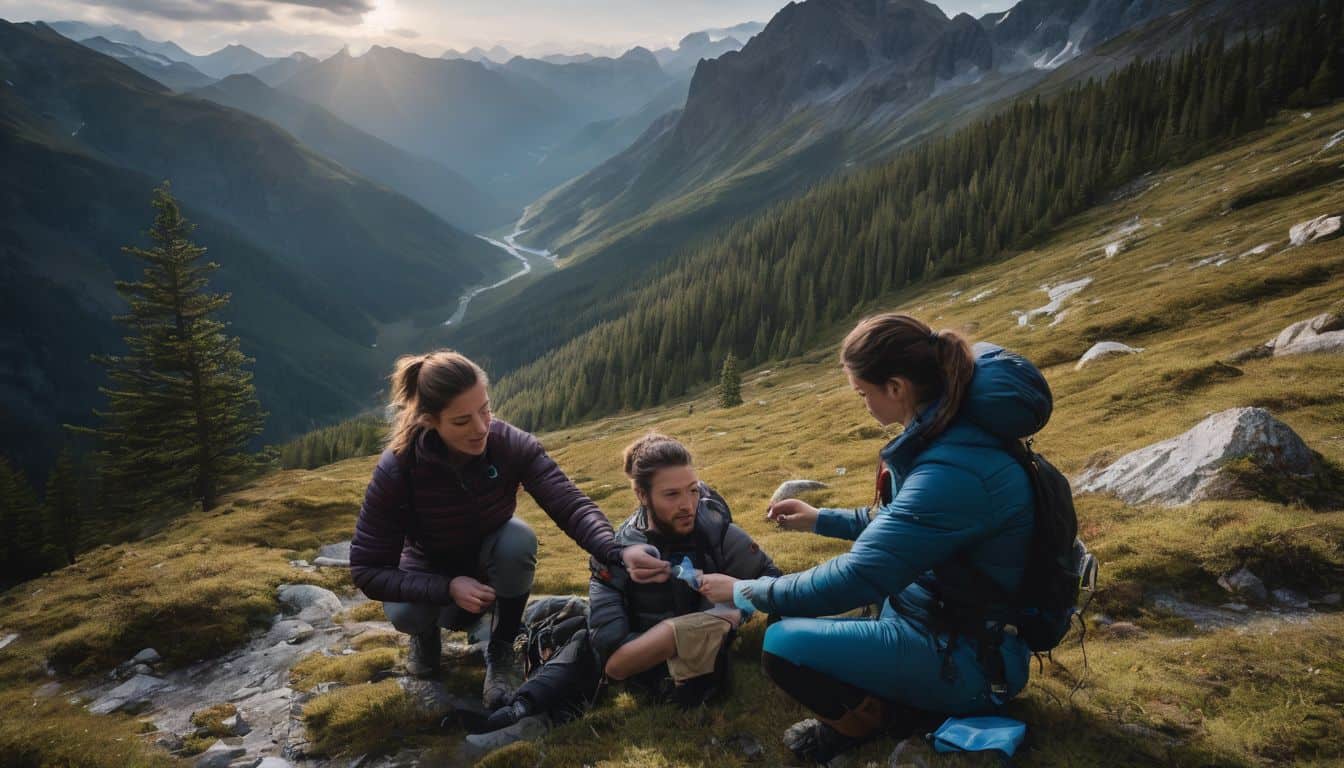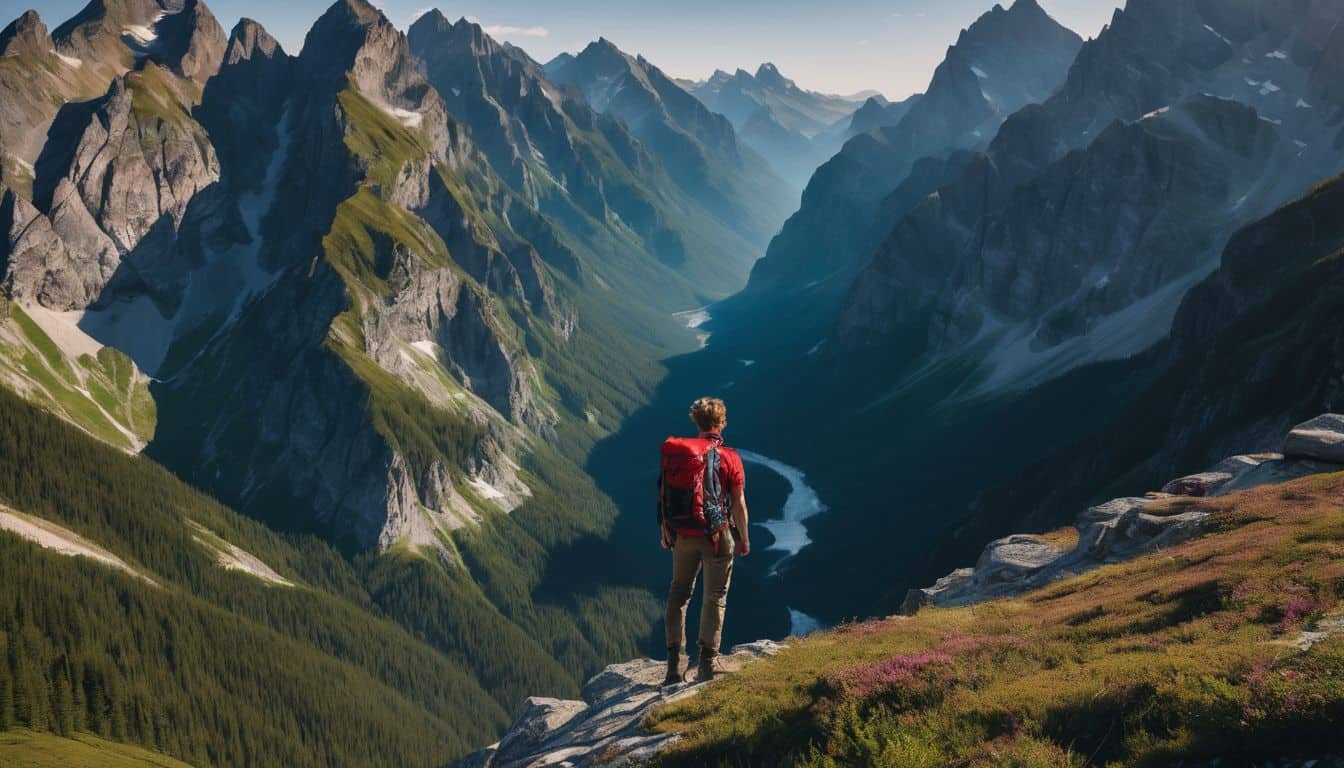Isn’t it fascinating how planning for a wilderness adventure can suddenly make you hyper-aware of potential medical emergencies? I know that feeling all too well; the exhilaration of stepping into the unknown tempered with an underlying concern for safety.
This realization sparked in me a curiosity to master emergency wilderness medical techniques, and now I’m eager to share my findings with you. Imagine this post as your treasure map, leading you towards tried-and-true techniques that could significantly tip the scales in your favor when professional help is scarce.
So come on, let’s uncover these 11 invaluable methods together to ensure we’re prepared for any outdoor medical emergencies that may cross our path.
Key Takeaways
- Understand the different types of injuries and illnesses that can occur in the wilderness, such as insect bites, gunshot injuries, and neurologic issues.
- Learn essential first aid techniques for wilderness emergencies, including controlling bleeding, splinting fractures, and managing shock.
- Be prepared to extricate and evacuate injured individuals safely from remote areas by assessing the situation, planning an evacuation route, calling for assistance, and using appropriate techniques.
- Seek training and certifications in wilderness medicine to build expertise in emergency response in resource-limited settings.
Understanding Wilderness Medical Emergencies
In wilderness settings, it is crucial to understand the various types of injuries and illnesses that can occur, such as neurologic emergencies, respiratory emergencies, shock, mental health emergencies, and mass-casualty incidents.
Types of injuries and illnesses
I often face different types of injuries and illnesses in the wild. They can occur from various sources and situations. It’s always good to know about them so you can be ready.
- Insect bites and stings: These are common in woodland areas. They may cause itching, swelling, or even severe allergic reactions.
- Abdominal pain: This could be a sign of appendicitis that might lead to peritonitis if not taken care of.
- Gunshot injuries: If you’re hunting in the wilderness, chances are high for these kind of injuries. Always take your safety measures.
- Vision loss: Eye injuries sometimes happen due to branches or debris in the wild, leading to vision loss.
- Bacterial infections: Open wounds in a wild setting risk catching an infection quickly if not treated right away.
- Neurologic issues: Lack of water or food might cause problems like fainting spells or seizures.
- Breathing difficulties: High elevations or certain plants can cause respiratory problems or asthma attacks.
- Trauma: Falls, animal attacks, and other unexpected events can lead to physical trauma such as bone breaks or deep cuts.
- Emotional distress: Feeling lost or stuck for too long could result in panic attacks and mental health concerns like acute stress disorder.
Neurologic emergencies
Neurologic emergencies can happen in the wild. These are serious health issues that involve the brain and nerves. Some examples include stroke, seizures, or brain injury. This might happen because of a fall or other accidents.
Handling these situations well means knowing what to do fast. It’s important to keep calm and use your knowledge of wilderness medicine. With proper care, we can stop more severe problems from happening later on.
Rescues may also be needed, especially if water is involved.
Respiratory emergencies
You know, being out in the wilderness can bring some breathing trouble. We call these respiratory emergencies. They might happen because of high places or bad air. Sometimes, you breathe hard and fast but still don’t get enough air.
That’s scary! It’s like having water in your lungs when there isn’t any pool around, a thing we call pulmonary edema. Not nice at all! To help someone with this problem, it’s good to know how the lungs work and what they look like inside – that’s anatomy and physiology for you! Even on planes, people often need help because of lung problems – those are inflight emergencies.
There are great books to learn more about this from NOLS Wilderness Medicine and Red Cross Wilderness First Aid Manual.

Shock
Recognizing the signs and symptoms of shock is crucial in wilderness medical emergencies. When someone is experiencing shock, their body can’t get enough blood flow to its vital organs.
This can happen due to severe bleeding, serious injuries, or other causes like a heart attack. It’s important to act quickly in severe cases of shock to increase the chances of a positive outcome.
The Wilderness Medical Society provides practice guidelines that give recommendations for managing shock in wilderness settings. Following these guidelines can help ensure appropriate treatment and improve the person’s chance of recovery.
Mental health emergencies
Emergencies in the wilderness can have a significant impact on our mental health. It’s important to understand that crises situations can affect our psychological wellbeing. During disasters, people may experience psychiatric emergencies and their management is crucial for their safety and recovery.
The World Health Organization recognizes the importance of considering mental health in disaster response. Understanding how human behavior changes in crisis situations helps us better manage mental health during emergencies.
By addressing these challenges, we can work towards promoting psychological resilience and support those affected by wilderness medical emergencies.
Mass-casualty incidents
In wilderness medical emergencies, mass-casualty incidents can happen. These are situations where there are many injured people that need help. It’s important to have special skills and knowledge to manage these incidents before and during rescue.
Emergency preparedness is crucial, especially in rural areas where help might be far away. Expedition medicine focuses on handling any medical emergency in the wilderness, including mass-casualty incidents.
Triage is an important part of managing these incidents, which means deciding who needs care first based on how badly they are hurt. Evacuation criteria also play a role in determining when patients should be transferred to higher-level medical care.
Responding to Wilderness Medical Emergencies
In responding to wilderness medical emergencies, it is crucial to have a strong understanding of first aid techniques and the basics of emergency wilderness medical techniques. Extrication and evacuation play a vital role in ensuring prompt medical care, while recognizing the importance of the golden hour can potentially save lives.
First aid techniques
When responding to wilderness medical emergencies, it’s important to have knowledge of first aid techniques. Here are some essential skills that can help you in such situations:
- Assess the scene: Look for any potential dangers and ensure your safety before approaching the patient.
- Evaluate the patient’s condition: Check for responsiveness and breathing. If necessary, call for emergency medical help.
- Control bleeding: Apply direct pressure to any wounds using a sterile dressing or clean cloth.
- Splint fractures: Immobilize broken bones by creating a splint with available materials like sticks or clothing.
- Treat burns: Cool the affected area with cool water for about 10-20 minutes and cover it with a sterile dressing.
- Manage shock: Help the patient lie down and elevate their legs, if possible. Keep them warm and reassured until help arrives.
- Perform CPR if needed: If the patient is not breathing or their heart has stopped, begin chest compressions immediately.
- Administer basic medication: If you have proper training and permission, you may provide pain relief or allergy medication as necessary.
- Dress wounds appropriately: Clean the wound thoroughly and apply an appropriate bandage or dressing to prevent infection.
- Stabilize fractures: Use proper splinting techniques to immobilize broken bones until professional medical help is available.
- Stay calm and reassuring: Provide emotional support to the patient while waiting for medical assistance.

Basics of Emergency Wilderness Medical Techniques
Emergency wilderness medical techniques are essential for survival enthusiasts like us. In remote areas, it’s crucial to know how to respond during a medical emergency before help arrives.
Wilderness first aid is different from urban first aid, so we need to learn specific techniques. Assessing a patient in the backcountry is important, and there’s even a widely used textbook called “The Bible of Wilderness Medicine” that can guide us in this field.
By understanding the basics of emergency wilderness medical techniques, we can be better prepared to handle any health-related situations while exploring the great outdoors.
Extrication and evacuation
In wilderness medical emergencies, it’s important to know how to remove a person safely from the area and get them proper medical help. Here are some key points about extrication and evacuation:
- Prepare for extraction: Before attempting any extrication, assess the situation and ensure your own safety. Gather necessary equipment like first aid kits, rescue ropes or litters, and communication devices.
- Stabilize the injured person: Assess the patient’s condition and provide immediate first aid as needed. This may include stopping bleeding, immobilizing fractures, or managing pain.
- Plan an evacuation route: Depending on the terrain and resources available, determine the safest and most efficient way to transport the patient out of the wilderness. Consider potential obstacles or hazards along the route.
- Call for assistance: Contact emergency services or professional rescue teams to inform them about the situation and request their support. Provide them with clear details about the location, nature of injuries, and other relevant information.
- Use appropriate techniques: Depending on the circumstances, you may need to perform a carry or drag technique to move an injured person safely. Choose a method that minimizes further harm.
- Coordinate with others: If there are multiple rescuers present, communicate effectively and assign specific roles to ensure a smooth extraction process.
- Maintain patient comfort: Throughout the extrication process, prioritize the well-being of the injured person by providing reassurance, comforting measures, and appropriate pain management.
- Monitor vital signs: Continuously monitor the patient’s vital signs during extraction to identify any changes in their condition that may require immediate intervention.
- Follow evacuation protocols: Adhere to established protocols for wilderness evacuations provided by relevant authorities or organizations involved in search and rescue operations.
- Document details: Keep records of all crucial information related to the incident, such as time of injury, treatment administered, observations made during extraction, and handover protocols upon arrival at a medical facility.
The importance of the golden hour
During a wilderness medical emergency, the golden hour is crucial. It refers to the first hour after an injury or illness when immediate medical intervention can make a big difference in patient outcomes.
Providing timely and efficient care within this critical timeframe significantly increases the chances of survival and recovery for individuals in need. The concept of the golden hour is well-established in emergency medicine, emphasizing the importance of acting quickly to provide effective treatment.
When it comes to wilderness emergencies, responding promptly during this golden hour is essential for optimal results.
Wilderness Medical Training and Certifications
Obtaining certifications for first responders is crucial in wilderness medicine, as it equips them with the necessary skills and knowledge to handle medical emergencies in remote and resource-limited settings.
Certifications for first responders
As a survival enthusiast, I’m sure you’re keen on knowing about the certifications available for wilderness first responders. These certifications not only equip you with the skills to manage critical situations in remote locations but also improve your chances of survival in the wilderness. To help you understand better, I have compiled a table of various certifications and their descriptions:
| Certification | Description |
|---|---|
| Wilderness First Responder (WFR) | This is the industry standard certification for outdoor guides and instructors. The WFR course covers specialized skills and knowledge needed to manage patients before they can receive definitive medical care. |
| Wilderness Emergency Medical Training (WEMT) | Recognized training program for first responder care in wilderness settings. It teaches individuals how to respond to medical emergencies in wilderness settings and transport patients to definitive care. |
| Emergency First Response (EFR) | This certification offers a competency evaluation in first aid response techniques and medical emergency projects. It’s not only relevant for wilderness survival but also useful in everyday life scenarios. |
Remember, getting certified not only adds credibility to your wilderness skills but also prepares you for unforeseen circumstances that might occur in the wild. Whether you’re a regular hiker, an avid camper, or someone who just loves exploring the outdoors, these certifications can be lifesavers.
Training and certification organizations
If you’re interested in wilderness medicine training and certification, here are some organizations to consider:
- Wilderness Medical Associates (WMA) International: They offer a variety of courses that cover medical concepts and basic life support skills for outdoor adventures. WMA provides training for both individuals and organizations.
- National Outdoor Leadership School (NOLS): NOLS offers wilderness medicine courses that focus on providing care in remote settings. Their curriculum includes topics like patient assessment, wound management, and evacuation techniques.
- American Red Cross: The Red Cross offers first aid and CPR courses that can be beneficial for anyone venturing into the wilderness. These courses cover basic medical skills and can help you respond to emergencies effectively.
- Wilderness Medicine Education Collaborative (WMEC): Established as a platform for discussing trends and issues in wilderness medicine, WMEC offers conferences, workshops, and online resources to enhance your knowledge in this field.
- University of Colorado System: If you’re looking for more in-depth training, the University of Colorado System offers a course on medical emergencies that includes CPR, toxicology, and wilderness medicine.
Wilderness Medicine in Resource-Limited Settings
In resource-limited settings, wilderness medicine training plays a crucial role in providing necessary medical care in areas with limited resources.
The role of wilderness medicine training
Wilderness medicine training plays a crucial role in equipping healthcare professionals with the skills needed to handle medical emergencies in remote and resource-limited settings.
This specialized training allows clinicians to effectively manage clinical problems with limited resources, especially when hospitals and rescue services may not be readily available for an extended period of time.
By learning how to provide medical care in austere environments, wilderness medicine practitioners can make a significant difference in saving lives and ensuring better outcomes for patients in challenging circumstances.
Wilderness medicine in disaster relief
Wilderness medicine in disaster relief is all about providing medical care in challenging and remote environments. In these situations, patients may have a range of illnesses or trauma that need immediate attention.
It can be tough because resources are limited, and improvisation and resourcefulness become crucial skills. Working alongside search and rescue teams and other emergency responders, wilderness medicine practitioners use their specialized training to address the unique challenges of providing medical care in resource-limited settings.
Evidence-Based Wilderness First Aid Practices
Assess and stabilize emergencies by utilizing evidence-based wilderness first aid practices, ensuring specific and appropriate medical interventions are implemented in remote environments.
Assessing and stabilizing emergencies
Assessing and stabilizing emergencies is crucial in wilderness medical situations. Here are some important techniques to keep in mind:
- Quickly assess the situation and make sure the area is safe before providing help.
- Check for any life – threatening conditions, such as difficulty breathing or severe bleeding.
- Perform CPR if necessary, using proper technique and following guidelines.
- Treat any toxicological emergencies promptly, especially if someone has been exposed to poisonous substances.
- Stabilize fractures or dislocations using splints or improvised materials.
- Administer basic first aid for cuts, burns, and other common injuries.
- Monitor vital signs like heart rate, blood pressure, and temperature to gauge the severity of the situation.
- Keep the injured person comfortable by providing pain relief and minimizing movement when necessary.
- Communicate clearly with emergency services or rescuers, providing accurate information about the condition of the patient.
- Stay calm and reassure the person in need of help, as your demeanor can have a positive impact on their mental state.
Specific and appropriate medical interventions
In wilderness medical emergencies, it’s important to know specific and appropriate medical interventions. Here are some key techniques to excel in emergency situations:
- Conduct a thorough patient assessment to identify injuries or abnormalities.
- Stabilize emergencies by providing immediate care for life-threatening conditions.
- Control bleeding through direct pressure or the use of tourniquets if necessary.
- Splint fractures and immobilize injured limbs to prevent further damage.
- Administer CPR and rescue breaths for individuals experiencing cardiac arrest or respiratory distress.
- Treat burns by cooling the affected area with clean water and covering it with a sterile dressing.
- Use improvised methods to secure open wounds and prevent infection until proper medical care is available.
- Provide pain relief using over-the-counter medications like acetaminophen or ibuprofen, if appropriate.
- Recognize signs of dehydration and administer oral rehydration solutions or fluids if necessary.
- Be prepared to perform basic dental care, such as temporary fillings or tooth extractions, if needed.
- Monitor vital signs regularly and be vigilant for any changes that may require immediate attention.
Conclusion on Emergency Wilderness Medical Techniques
In conclusion, mastering emergency wilderness medical techniques is crucial for providing effective care in remote settings. By understanding different types of injuries and illnesses, as well as the basics of first aid and evacuation protocols, you can excel in responding to emergencies.
Training and certifications are also important for building expertise in wilderness medicine. Remember, in resource-limited settings, evidence-based practices and the ability to assess and stabilize emergencies are essential.
With these skills, you can be better prepared to handle medical emergencies in the wilderness and save lives.
FAQs on Emergency Wilderness Medical Techniques
1. What are wilderness medical techniques?
Wilderness medical techniques are skills and methods used to provide emergency medical care in remote or outdoor settings, where access to traditional healthcare facilities is limited.
2. Is it important to learn wilderness medical techniques?
Yes, learning wilderness medical techniques is crucial for anyone who spends time in remote or outdoor environments, as they can help save lives and mitigate the risks associated with accidents or illnesses in such settings.
3. What are some common wilderness medical techniques?
Some common wilderness medical techniques include assessing and stabilizing injuries, treating wounds, managing fractures and dislocations, providing basic life support (CPR), improvising splints or bandages from available materials, and recognizing signs of hypothermia or heat-related illness.
4. Can anyone learn emergency wilderness medical techniques?
Yes, anyone can learn emergency wilderness medical techniques through specialized training courses that teach basic first aid skills specifically tailored for remote locations. These courses are typically open to individuals of all backgrounds and abilities.
5. How do I excel at emergency wilderness medical techniques?
To excel at emergency wilderness medical techniques, it’s important to regularly practice your skills through simulations or real-life scenarios. Staying updated on the latest guidelines and advancements in outdoor medicine can also enhance proficiency in this field.





Leave a Reply